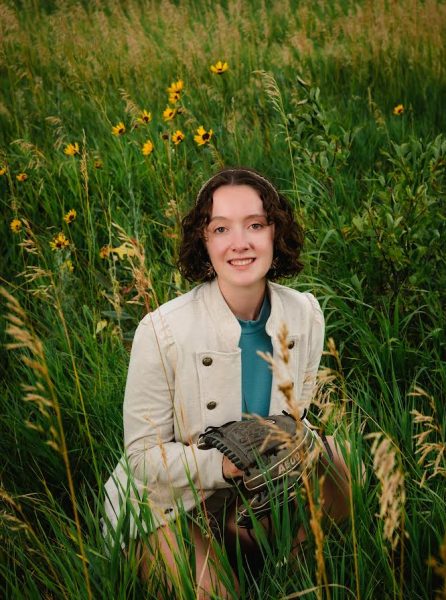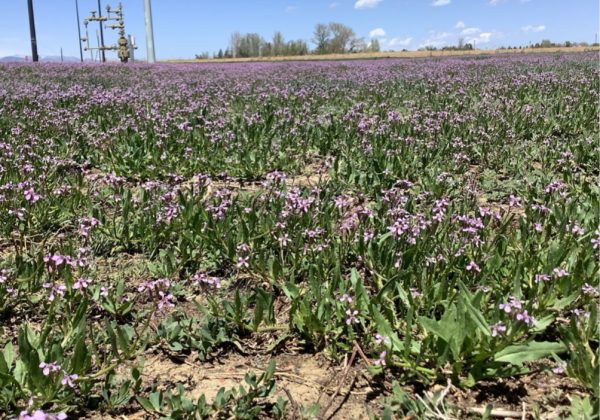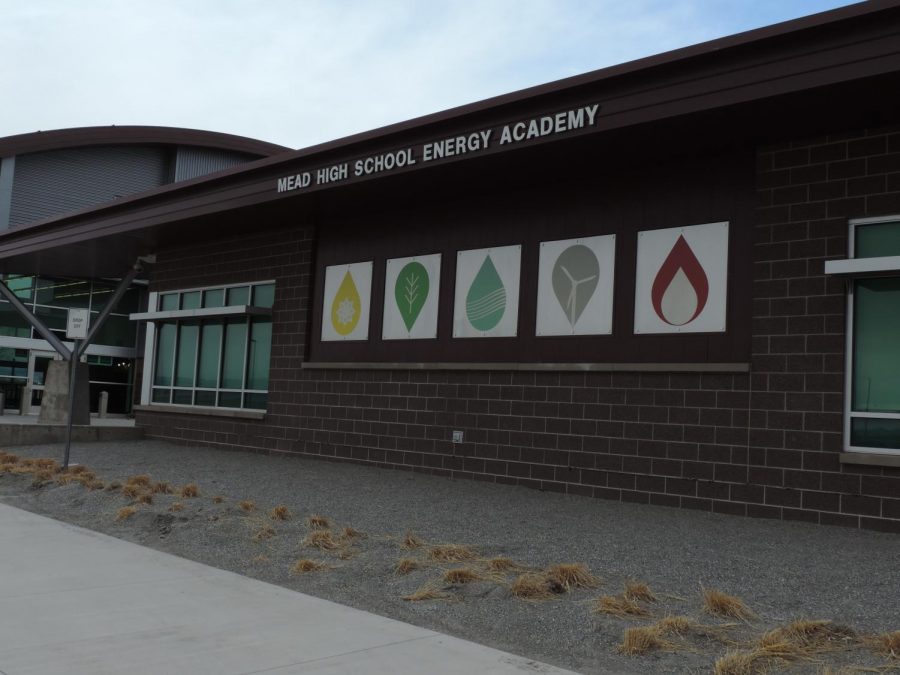Mead High School’s Energy Academy prepares students for a future in energy-focused careers
The Energy Academy provides its students with great opportunities to understand and consider future energy field careers
The Energy Academy classrooms (H wing) rest near the MHS cafeteria and are home to many interesting energy classes.
Students walk past the Energy Academy classrooms multiple times a week, but few may genuinely understand what it is and which courses are taken there. Specific schools in the St. Vrain Valley School District carry their own academy programs, some of which include a focus on Bio Medical learning, STEM (Science, Technology, Engineering, and Math), and IB (International Baccalaureate). Mead High’s focus is energy.
“Every school has its own focus. In a committee for Mead High School, [the topic of] energy came up. There’s so many types of energy in the Front Range alone,” said Ms. Shannon Krack, the current Academy Coordinator.
The inaugural Energy Academy was originally kickstarted by Mr. Will Pratt, but was later taken over by Ms. Krack after he stepped away from the Energy Academy. The academy officially became available to students in 2015, and it has been growing ever since.
The idea of the academy was discussed through a committee at the high school. The energy field is rapidly expanding in careers and increasing in public interest, especially as the impacts of global warming and population growth are being noticed more and more in today’s society.
Ms. Krack mentioned that people “can see solar panels on the Mead solar farm as [they] drive down the highway… [as well as] blades of the wind turbines on giant flatbed trucks”.
She also said, “We [even] have geothermal in the mountains… hot springs, geothermal water.” In other words, energy topics can be seen everywhere in our community.
The Energy Academy currently has an advisory board that consists of members from different businesses in the energy field. The Colorado Solar and Storage Association, Namaste Solar, Jack Solar Garden, Western Midstream, Occidental Petroleum, Vestis, Black Hills Energy, United Power, University of Wyoming, and many additional companies have members that greatly contribute to this program.
It’s important to note that the energy field doesn’t solely focus on engineer career opportunities — it can include everything from lawyer to veterinarian careers as well.
At the end of each year, upperclassmen students in the Energy Academy work on Capstone projects.
“The Energy Capstone course is meant to be an experience where students can create or develop a proposed project from the ground up, as well as gain vital job shadowing experience for their future career in the Energy Industry,” said Mr. David McCall, an Energy Academy instructor.
In the Energy Senior Capstone, which Mr. McCall teaches (along with Energy Industry Practices), students “develop their own Capstone project or — if the opportunity presents itself — work on a real physical project that is brought to [the program] by the community, school district, etc.”. The Senior Capstone course also includes job shadowing opportunities where students can work with and learn from professionals in the energy industry. Many enjoy the academy because they can work with experts involved with the student’s career interest.
According to Mr. McCall, “Industry professionals provide students with knowledge and expertise. [They] allow opportunities for job shadowing and interviews and serve as excellent references for a lifetime for energy graduates when it comes to their career resumes.”
This year, the Capstone students are working on creating a solar array for the school. The academy peers are divided up into two groups or “teams”.
Currently, one “team [is] working on integrating fractals into their solar panels, and the other [is] developing a solar tower,” said Kevin Hughes (‘21), an Energy Academy student working on the Capstone project.
Many students enjoy the overall individual student freedom involved in energy classes. The first two years are when students learn the basics of energy concepts. According to Ms. Krack, these classes usually include hands-on learning, but with the COVID-19 pandemic, it’s been significantly more difficult to create that type of environment. As students travel up through the academy, their focus becomes more set on a specific topic.
Mr. McCall often notices that students in the classroom are able to develop friendships with each other. Most of the students have been in the same classes at the academy together for four years by the end of the program. It is a place where peers share the same interests and work alongside each other throughout high school. Students learn about science and engineering in energy along with everything from the economics of energy to energy policy. Mr. McCall mentioned that students enjoy learning in the Energy Industry class with certain careers in mind.
Adian Pettitt (‘22), a current Energy Academy student, describes the Energy Academy as an “opportunity to [be] exposed to the energy industry and sciences”. He also discussed how the academy is a great way to learn about the sciences, industry, and community of the energy field.
Pettitt (‘22) enjoys the Energy Academy because the later sophomore and junior classes provide its students with the opportunity to build their own technology.
“I am building wind turbines in my basement right now,” he said. Pettitt (‘22) is interested in pursuing environmental technology (such as wind turbines, which provide renewable energy sources) and astronomy as future careers.
Pettitt also mentioned that students in the Energy Academy are able to form connections with professionals in certain fields of energy through classes. Many experts are frequently invited into classes to talk and answer questions.
As said by Hughes (‘21), the Energy Academy can be described as “a way to be informed about the processes of energy production and how precisely the energy industry works when it comes to producing energy”. Some of the classes involve research into energy production methods and the industry surrounding it.
Hughes (‘21) especially enjoys the research aspect of the academy classes. He explained, “Because of the Energy Academy… I discovered something that I’m really interested in, which is molecular biology.” This is a topic that Hughes (‘21) became interested in due to the research that students are encouraged to do in the academy.
Any student can be involved in the Energy Academy by registering and talking to their counselor. There is no applicatio.
“Any freshman or sophomore can register for Principles of Energy Science and get [started in] the academy,” said Ms. Krack, who highly recommends more students get involved. It is important for students who want to be involved to be genuinely interested in learning about energy, especially when they reach the higher level classes.
Students start with the Principles of Energy course and work their way up through more involved and difficult classes. The academy is built to have students stick with it from the start to the end, but it is not necessary if a student finds they are no longer interested. By the end of the academy, the last classes taken are the Geographic Information Systems capstone, AP Environmental Science class, and other energy electives. There are a couple requirements that come with being a part of the Energy Academy, some of which include two AP classes, two years of a foreign language, and a handful more that can be found in the MHS course handbook.
Students are also able to receive a scholarship and merit for future endeavors in energy once they complete the program.
Overall, the Energy Academy is intriguing to explore and full of different topics that take students on an intellectual journey through the energy field. It prepares students for a future in a fast-growing industry.
Your donation will support the student journalists of Mead High School. Your contribution will allow us to purchase equipment and cover our annual website hosting costs.

Skylar Whalen is a senior. She is this year's editor-in-chief. Skylar enjoys painting, singing, and playing softball. She is a huge animal lover and works with dogs outside of school. Skylar plays competitive softball and hopes to play in college. She is excited to help other writers succeed and grow. Skylar can’t wait to work with new people and produce engaging stories for the community around her. She also enjoys having the excuse to write about herself in third person and make her seem interesting.











